AWAITING THE INVASION
Lithuania is prepared to rebuff the Kremlin
Lithuanians, who remember the Soviet occupation, armed struggle for independence and the storming of the Vilnius TV Tower, have a good understanding of the Kremlin incumbents’ mentality and are convinced that should Ukraine fail, Lithuania might become Putin’s next victim. And even NATO membership will not protect the country if Russian tanks appear outside Gediminas’ Tower.
To make sure that the Kremlin does not get an upper hand, Lithuania – the only NATO member – backs providing weapons to Ukraine and urges allies to do the same. “The country has the right to defend itself. This is not an escalation of the conflict; on the contrary, the West’s inaction guarantees immediate success to Russia’s war scenario. We must not help realize it,” said Minister of Foreign Affairs Linas Linkevicius after Minsk 2 meeting.
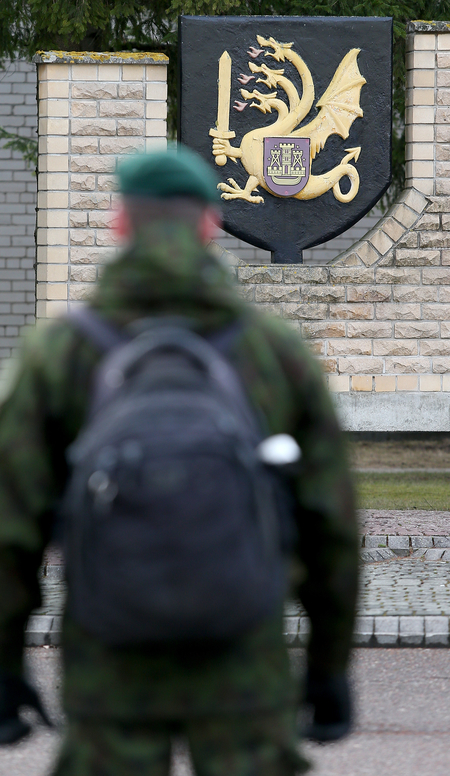
“Today betraying the Ukrainian people would mean betraying ourselves, because we will be the next after Ukraine”: with these words, said at the Munich Security Conference, President Dalia Grybauskaite expressed the popular sentiment in Lithuanian society.
Anxiety in Vilnius is exacerbated with the Kremlin’s continual muscle-flexing, including intensive military exercises alongside the border with the Baltic States, frequent violations of airspace by Russia’s fighter jets, and deployment of Iskander missile complexes in Kaliningrad oblast.
Our impression after a two-days’ stay in Lithuania: they are prepared for invasion.
TOTAL MOBILIZATION
Prior to 2014 (i.e., before the appearance of Putin’s “green men” in Crimea) Lithuania’s armed forces, according to the Defense Ministry, consisted of 7,890 career troops, 4,550 military reserve, and 2,301 civilian servicemen. Moreover, many units were heavily understaffed, with only 15 to 20 percent positions filled. Now the Lithuanian army has an active personnel count of 20,000, 3,500 of whom are recently enlisted. Today Lithuania spends 500 million euro annually on its armed forces.
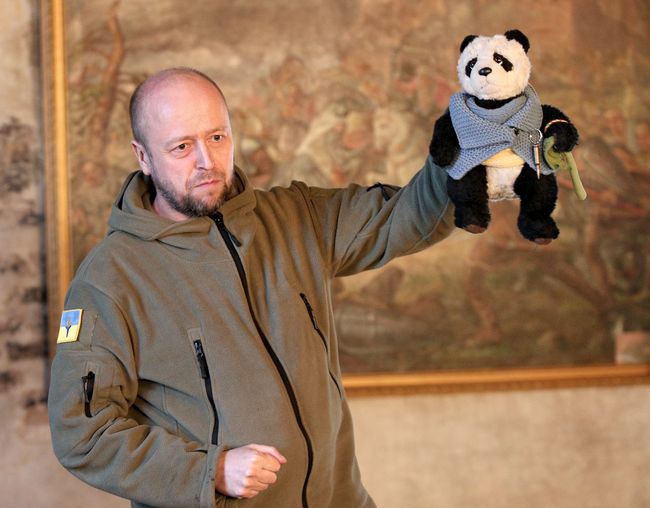
JONAS “PANDA” OCHMAN IS A LITHUANIA-BASED SWEDISH VOLUNTEER WHO HELPS UKRAINE. AS THE HEAD OF VOLUNTEER ASSISTANCE TO UKRAINIANS IN LITHUANIA AND EUROPE, OCHMAN COORDINATES THE ACTIVITIES OF THE INTERNATIONAL BLUE-YELLOW CENTER AND COOPERATES WITH THE ARMY, SPECIAL FORCES, THE RIGHT SECTOR, AND MARINES. WHEN ASKED WHY HE IS HELPING UKRAINE, HE ANSWERS WITH A SMILE: “TO AVENGE POLTAVA.”
Early in 2015, the Seimas reintroduced mandatory initial military service. In the same year the Lithuanian government published a 100-page-thick booklet and disseminated it across the country. The brochure, under a clumsy title What We Need to Know About Preparation for Emergency or War, could be best described as a self-study handbook for the citizens in case of invasion and occupation. Russia is not named, but there is no need to, after all. The brochure was published with an absolutely obvious goal: to prepare the nation and avoid the fate of Ukraine. It was handed out at libraries, universities, schools, and distributed via the Internet. It contains a lot of useful tips in case you hear guns outside your house. It also instructs you how to help overcome the foreign occupants by doing your usual job, but in a sloppy and inefficient manner.
Although Lithuania does not share a border with Russia, Kaliningrad – a Russian exclave on the Baltic – lies a three-hour drive away from Vilnius. This piece of land, which Moscow insisted on preserving after the Second World War, is now the base of Russia’s Baltic Fleet and one of the most important parts of its Navy.
REGULAR MILITARY SERVICE: DRAGOON BATTALION
Nastia is 19, and she is the nineteenth girl in the Lithuanian Grand Duke Butigeidis Dragoon [“Dragon.” – Ed.] Battalion. Nastia comes from Ukraine, she was born in a village near Kharkiv. When she was seven, her parents divorced, and her Lithuanian mother brought her to Lithuania.
Six months ago, on August 24, when Ukraine marked the 24th anniversary of its independence, Nastia enlisted in the armed forces of Lithuania, because “the developments in Eastern Europe suggested no other option.” “It was my own idea, to enlist in the army. Only later did I learn from my family, that my Ukrainian great-grandmother and grandmother also served in the army, in the Soviet one. It gave me inspiration,” shares the girl. Before the enlistment Nastia went to visit her family in Ukraine, in Kharkiv oblast. She says they are very proud with her choice and support her.

NASTIA, 19, SOLDIER OF THE LITHUANIAN ARMY, COMES FROM UKRAINE
The girl admits that being a woman in the army is a tough job. “I could never have imagined that in the winter, when it’s wet and freezing cold, I would have to sleep in the woods.” The gear she has to wear every day weighs some 25 kilos. “At first we girls helped each other to lift and put it all on. It was so hard. Now it’s a bit easier. We are getting the knack of it, and we are awfully proud of ourselves,” says Nastia.
Today she is counting the days before demobilization and dreams of going to a university. “As a child, I wanted to become an archeologist. I think I will enroll at the archeology department.”
Lithuania has three and a half thousand volunteers like Nastia. This makes 100 percent of the entire reintroduced draft in the country.
In 2008 Lithuania gave up compulsory military service and switched to the contract basis. However, after Russia’s annexation of Crimea and invasion in Donbas, on March 19, 2015, the Seimas virtually unanimously passed the bill on reintroduction of the draft. According to the new law, over the following five years all able-bodied young men and women aged 18 to 26 (for volunteers the upper age limit is 32) must undergo a nine-months military training program.
Recently President Dalia Grybauskaite said that draft would be conducted on the regular basis. “As for the military sphere, I am of the opinion that in the long-term perspective, Lithuania must have a mixed type army. Conscription, alongside with professional army, must become a normal, constant phenomenon, and not exist briefly and sporadically.” Grybauskaite believes that such a way of army organization is the most efficient and affordable option for a “middle-sized country.” The state simply has not enough funds for a large, fully geared army, while conscripts are not so costly as professional troops.
Lithuania’s plans were considerably affected by an increased perception of being threatened by Russia. Moreover, NATO has frequently criticized the Baltic States for low defense expenditures. Besides, military experts are almost unanimous: in conditions of the contemporary hybrid war, the role of special army forces has considerably grown, while that of conventional units is waning. Consequently, a growing proportion of civilians who have received military training would be useful in case of eventual conflict.
A SECOND ARMY
“To find Lithuania’s second army, you have to travel down an unmarked dirt track on the outskirts of the capital Vilnius,” writes Rageh Omaar in his article “Putin’s war of attrition: Is Lithuania next?” published in The Telegraph (UK). “Here on the edge of one of the city’s arterial ringroads is a series of utilitarian and drab squat buildings; shooting ranges left over from the Soviet era.
“There are dozens of these military installations dotted through the country, a throwback to when Lithuania was the front line of defense for Moscow in the Cold War.
“But this base is now home to the Union of Riflemen,” writes the journalist as he describes his acquaintance with the special and probably most highly motivated unit of the Lithuanian Armed Forces.
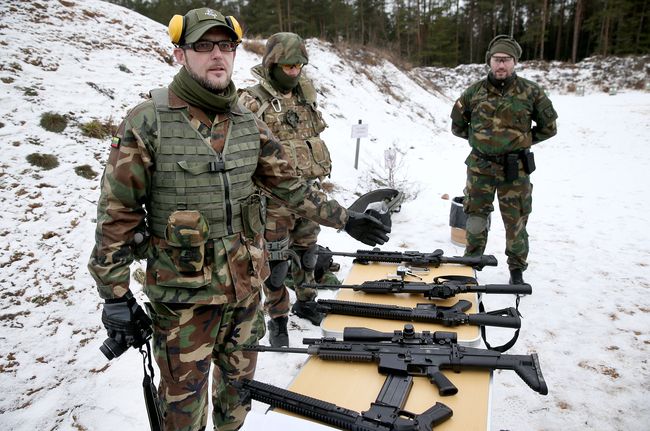
THE RIFLEMEN HAVE SERVICE AUTOMATIC GUNS, JUST LIKE REGULAR LITHUANIAN SERVICEMEN. TYPICALLY IT IS AR-15, AN ANALOG OF THE AMERICAN M-16. THE PRICE IS SHORT OF 1,500 EURO PER PIECE. ALSO, THERE ARE SEMI-AUTOMATIC GUNS, THE SO-CALLED CIVILIAN WEAPONS, PURCHASED BY THE MEMBERS OF THE UNION. “IN OUR ORGANIZATION WE DO NOT USE RUSSIAN WEAPONS,” SAYS HAROLDAS DAUBLIS (LEFT)
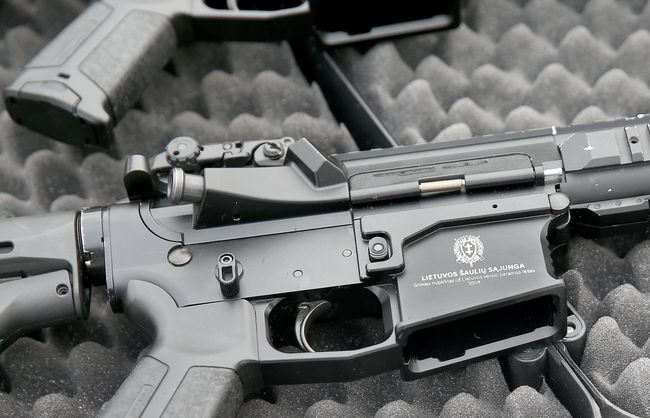
The Union of Lithuanian Riflemen is a civic group aimed at the military training of civilians. It was created in 1918, when the first Independent Republic of Lithuania was created. The state was young and weak. The Riflemen had to defend it against enemies.
The fate of Lithuanian Riflemen greatly resembles that of Ukraine’s UPA fighters. The Union was a result of merging a variety of units defending their own villages, homes, and families. When the Soviet army occupied Lithuania, the Soviets banned the Union of Riflemen in 1940, and most of its members (at that time, according to various sources, it was almost a 61,000-strong organization) were repressed. Wikipedia writes that they were imprisoned. Yet a member of the Riflemen Union and coordinator of the group for assisting Ukraine Haroldas Daublis said in his interview with The Day that the Soviets did not send Lithuanian riflemen to prison camps. They were shot on the spot.
In the post-war years the surviving Lithuanian riflemen joined the Forest Brothers to fight against the Soviet occupation.
During the vegetative age of the Soviet Union, in the early 1990s, the Union of Riflemen was reanimated. When Lithuania proclaimed independence, the organization got a special Act.
According to Lithuania’s current legislation, the Union of Riflemen is part of the country’s defense force. The chief rifleman (a retired army officer with a rank no lower than colonel) is proposed to the general assembly of the organization by the defense minister of Lithuania, who also endorses the heads of all territorial units of the Union (currently, there are 10 of them).
Prior to the war in Ukraine the Union of Lithuanian Riflemen did not enjoy great popularity in the country. Overall 61 percent of its membership was made up by Young Riflemen, teenagers aged 12 to 18; 8 percent were “active Riflemen,” chiefly retired military men; and the remaining 31 percent were “passive Riflemen.” All in all, the organization had some 6,000 members whose activities were limited mainly to patriotic education of youth and taking care of historical places and memorials. Lithuanians baptized them mockingly “the union of older gentlemen.”
Today the Lithuanian Riflemen found their second wind. Over two years more than 2,000 new members have joined the organization, mostly active men aged 21 to 40.
Now the Union has over 9,000 members, 50 percent of whom constitute Young Riflemen. They get patriotic schooling, basic military training, and learn survival skills in spartan conditions (similar to Ukrainian Plast). The other 50 percent, the core of the organization, live according to the principles of the Swiss army: they have personal weapons (NATO standards) and wear military uniforms, they have weekly military drills and learn the history of Lithuania. “Among our members there are historians and political scientists. And we together examine a concrete case from Lithuania’s history. Also, we organize hiking tours to the places were Lithuanian guerilla fighters camped, and we invite professors of history. This combines sport, leisure, and patriotic education. In this way, people understand better what they defend,” tells Daublis. According to the members of the Union, they prepare to rebuff Russia’s invasion in Lithuania.
If Lithuania should join the war, the Riflemen will fight alongside with the regular army. “We are subordinated to the Commander-in-Chief of the Lithuanian Armed Forces. Our elite, the top-notch riflemen, belong with the regular army by default.” The riflemen will not disclose the concrete mission they are charged with, but say that their main role is territorial defense.
The organization has several sources of financing. A part of the expenses is covered by the defense ministry of Lithuania. Another part is membership fees, seven euro per year. “This is rather a symbolic amount, affordable to the poorer dwellers of the province,” explains Daublis. The lion’s share of the costs (instructors, rental of shooting ranges and suchlike) is covered by clubbing together or due to sponsor help. There are very many business owners both among the riflemen self and among their friends and fans in Lithuania.
A SPECIAL NATO HQ
Virtually before boarding the Kyiv-bound plane, The Day managed to visit the recently created NATO headquarters in Lithuania, opened in Vilnius on September 4 past year.
One of the key tasks of this NATO Force Integration Unit, just like of its counterparts in Bulgaria, Latvia, Poland, Romania, and Estonia, is the coordination of the Alliance’s quick reaction forces in the event of an international crisis in the region.
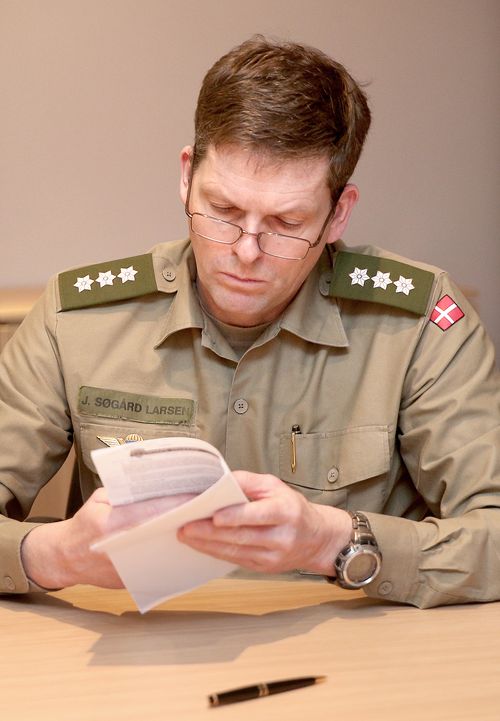
COL. JACOB SOGARD LARSEN (DANISH ARMY), HEAD OF THE NATO FORCE INTEGRATION UNIT IN VILNIUS
NATO began to create new command centers following the decisions of the Alliance’s summit in Wales in the fall of 2014. At that meeting the Alliance member states agreed to create a 5,000-strong rapid reaction force, capable to respond to any real or hypothetical threats to the NATO countries at a shortest notice.
The FIU in Vilnius will be led by Danish Colonel Jakob Sogard Larsen. Germany, Canada, and Poland contributed the most staff for manning the Lithuanian command center.
Newspaper output №:
№16, (2016)Section
Topic of the Day





